Cars vs. Peds: Bloomington city council reverses course, disallows visual aids for public comment
Last Wednesday, Bloomington resident Greg Alexander wanted to support his three minutes of public comment with six photographs, to be projected onto the screen in council chambers. But the council departed from the guidance on its website that allows for this, and did not let him use the photos.
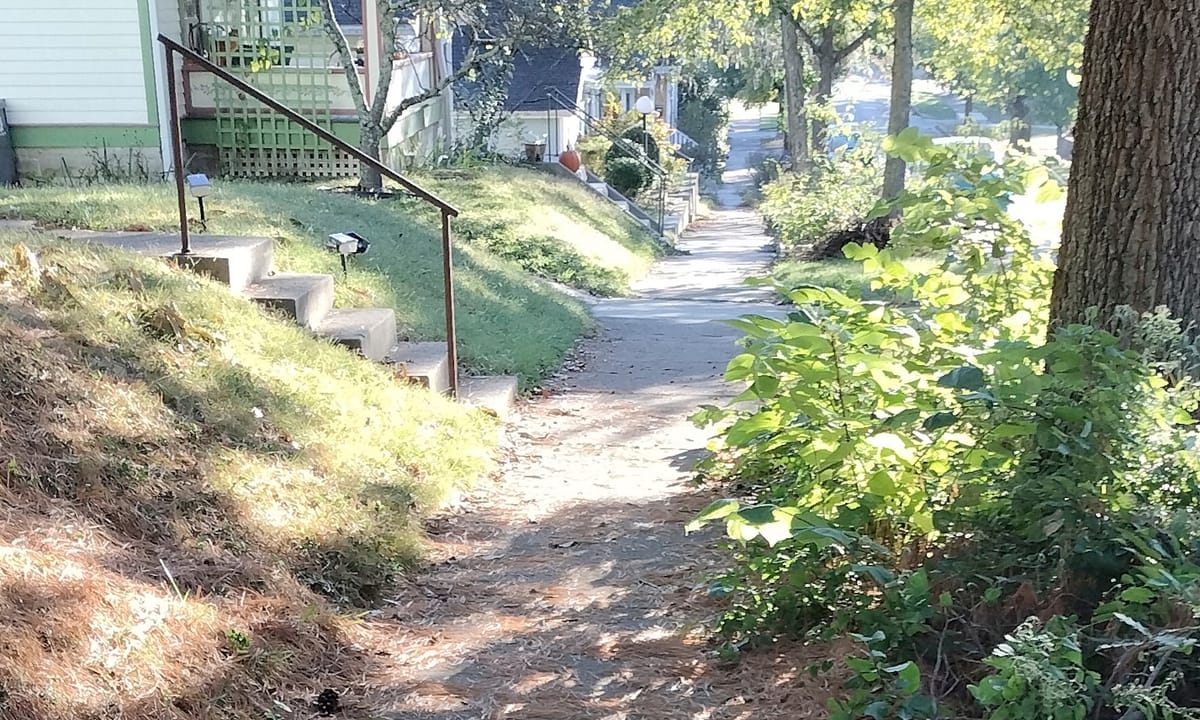
Last Wednesday, Bloomington resident Greg Alexander wanted to support his three minutes of public commentary in front of the city council with a slide deck consisting of six photographs, to be projected onto the screen in council chambers.
The commentary was a topic Alexander is known for—advocacy of people who don’t use cars to get around.
But city council president Hopi Stosberg decided a few hours before the meeting, on advice from council attorney Lisa Lehner, that Alexander was not allowed to use those visual aids for display on the big screen in council chambers—as he and others have been allowed to do in the past. The guidance, which appears to be a policy, had been included on the council’s website for the last seven years.
But the guidance on the council’s website has now been deleted. It previously stated: “Members of the public who wish to display visuals as part of their public comment, should contact the Council Office by 5:00 pm on the day before the Council meeting.”
The city council is relying on new federal accessibility requirements as the reason for changing its approach to public commentary. The new requirements don’t go into effect until about six months from now, on April 26, 2026. The requirements also do not apply to archived material, and do not apply to material that is posted by third parties, which presumably would include people who want to speak from the public mic.
The idea is that the council does not have the capacity to ensure that visual aids submitted by public commenters comply with accessibility regulations. So the council will ensure that no visual aids from public commenters fail to comply with the requirements—by not allowing any visual aids to be used.
City council attorney Lisa Lehner has stated in writing to The B Square that disallowing the use of visual aids by public commenters now, when it was allowed before, does not reflect a change in policy, because the previous guidance published on the council’s web page was not a policy—because the council had never voted on it.
The B Square is looking into the legal question of whether the website guidance should be analyzed as a de facto policy and whether the policy governed the “manner” part of the time-manner-place restrictions of a public forum, in the sense of settled First Amendment case law.
Alexander says he’s mulling the idea of filing a small claims action for the waste of the time he spent preparing the slides, and writing remarks for a presentation based on them.
In the meantime, The B Square is providing a transcript of Alexander’s remarks—which he modified to fit a presentation without visual aids—as well as the slides that he would have presented.
Slidedeck in support of comment on peds, cars
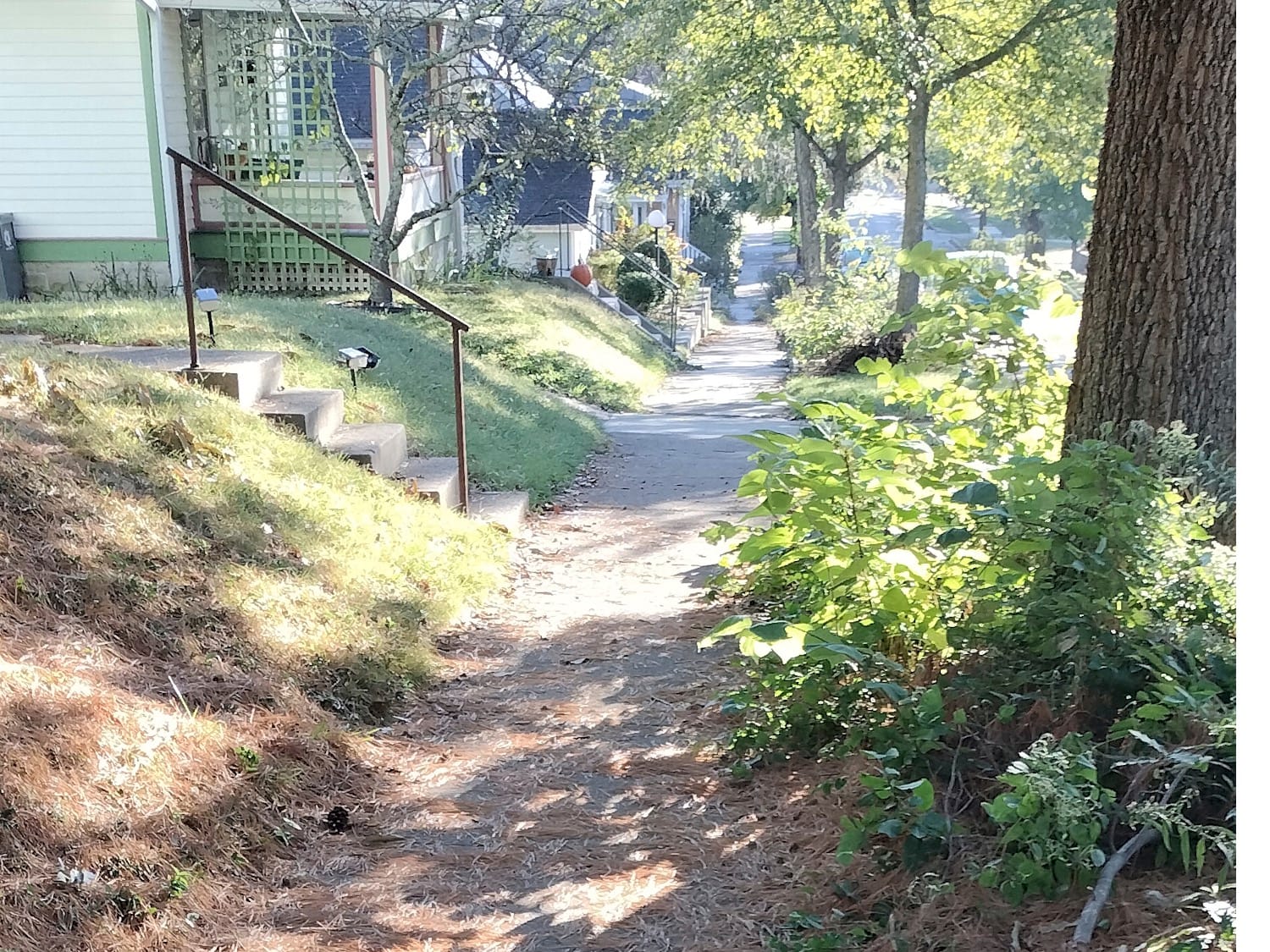
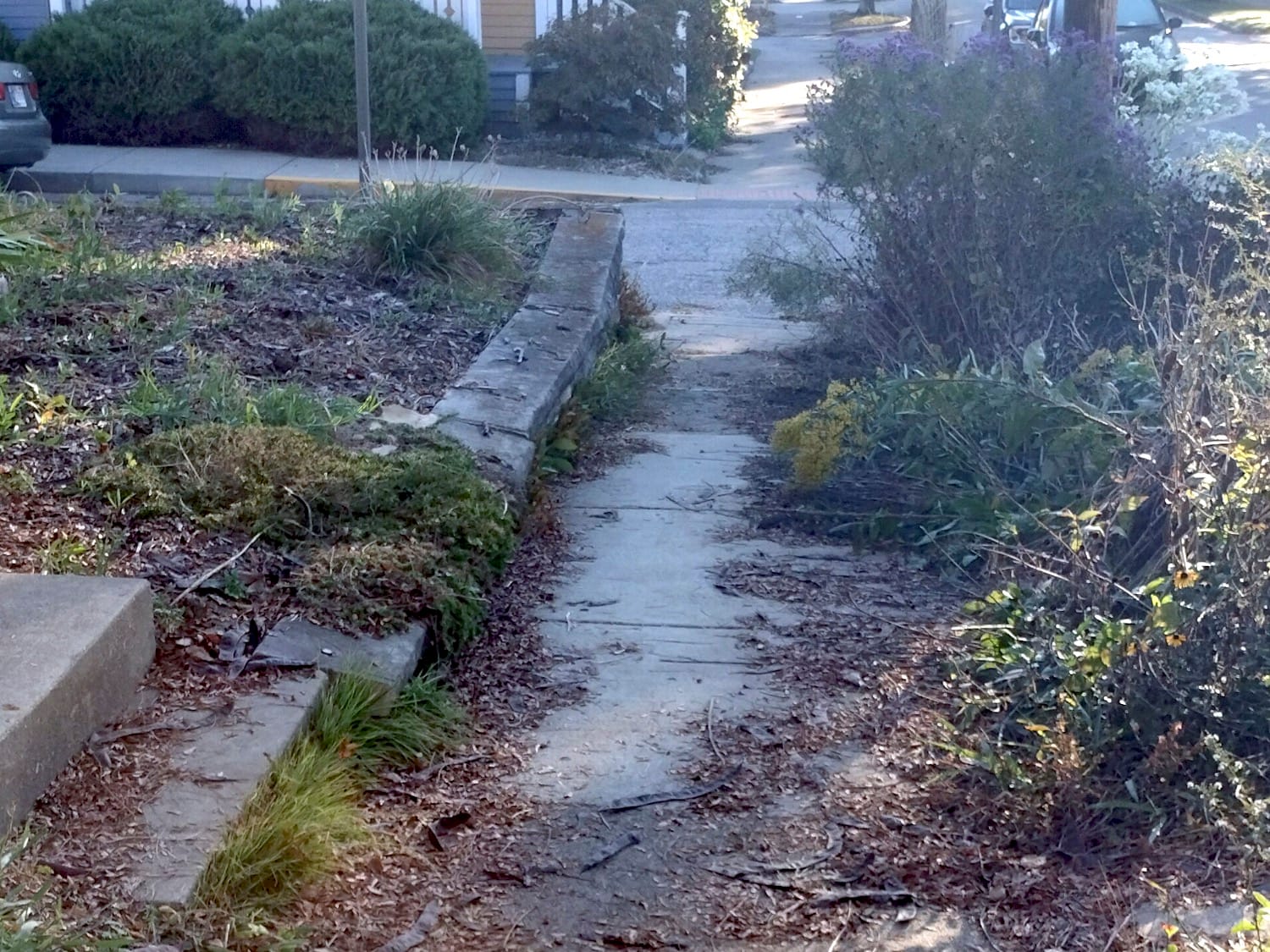
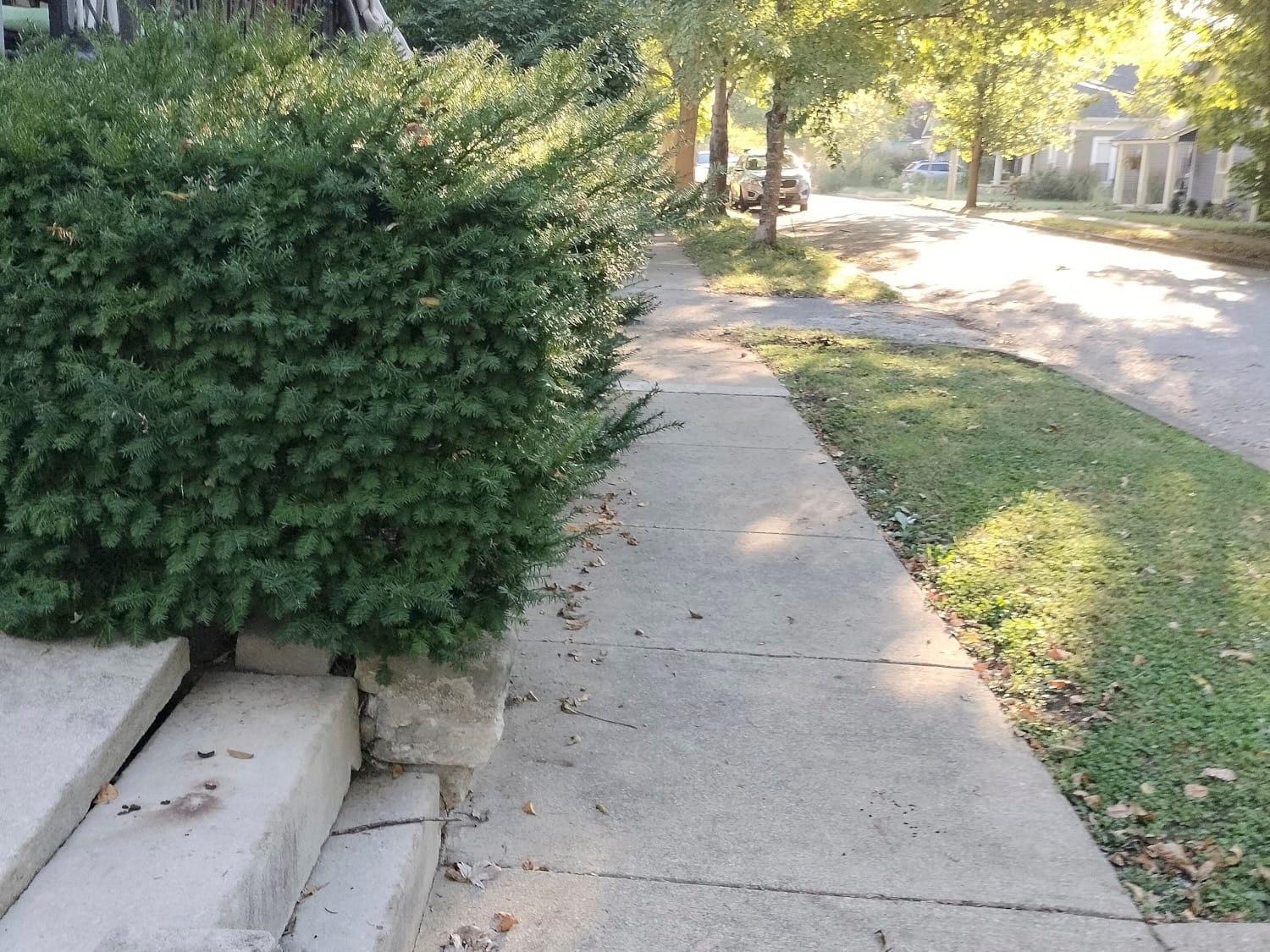
Sections of sidewalk along Howe Street looking east. (Greg Alexander, 2025)
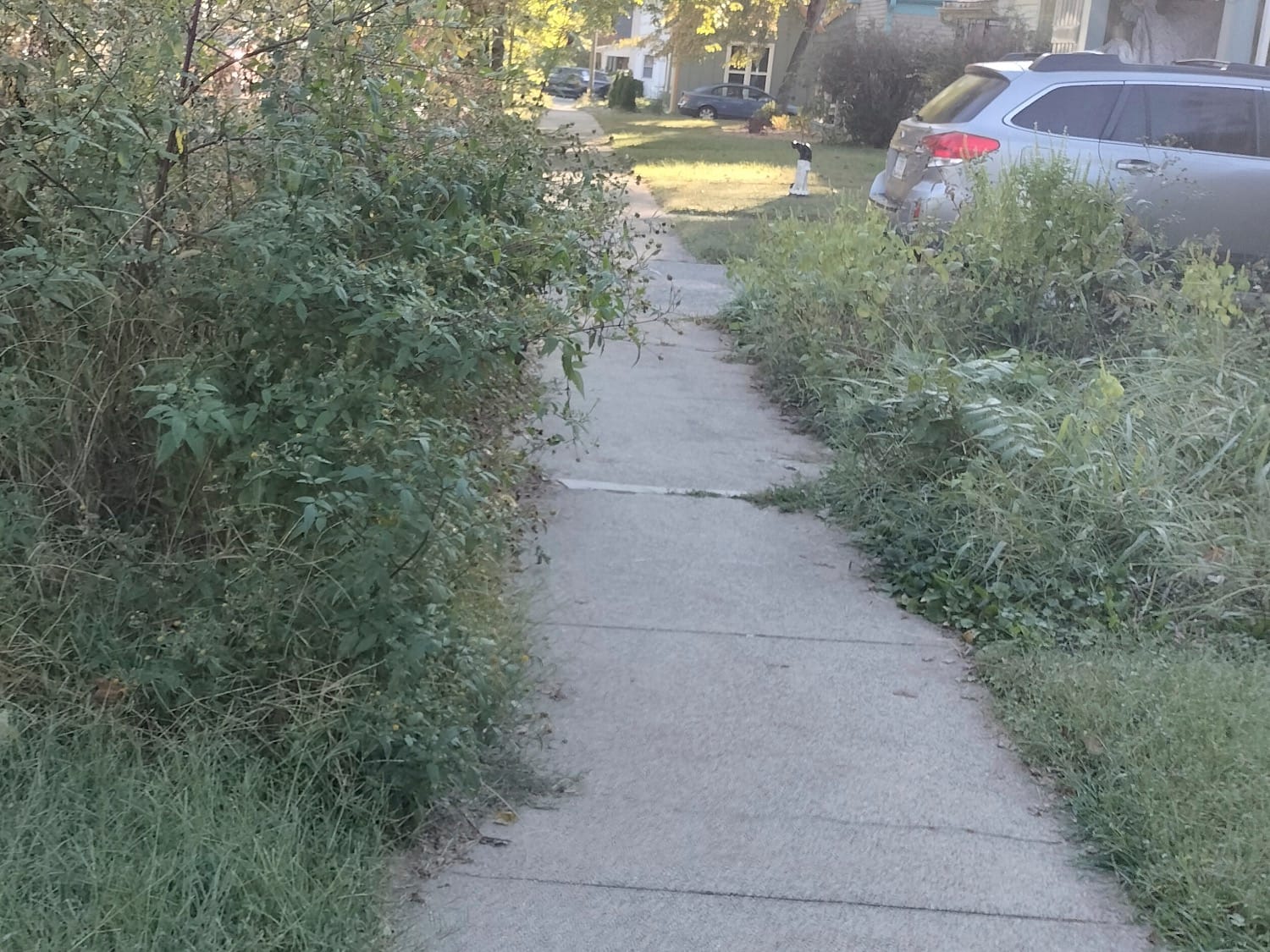
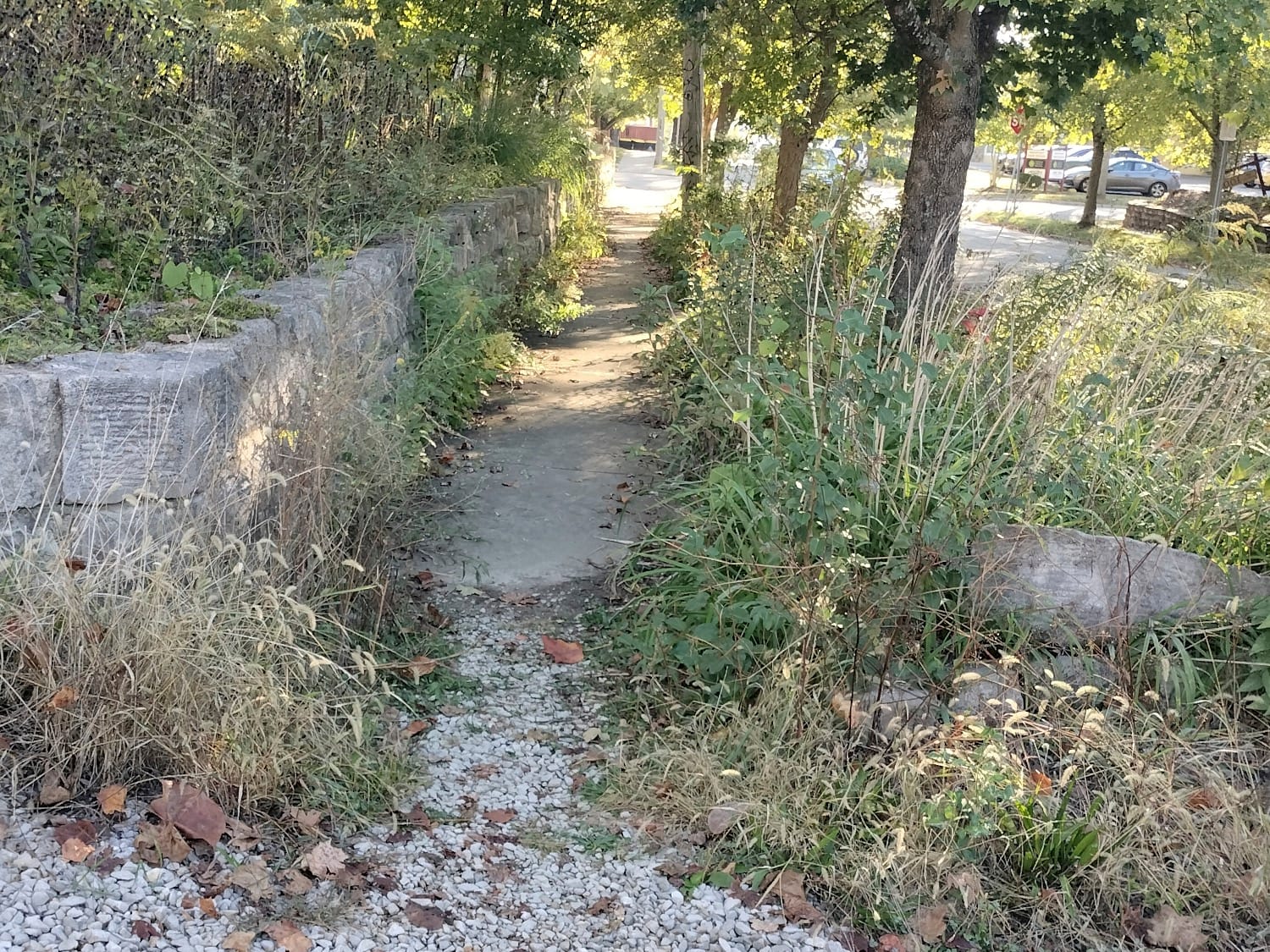
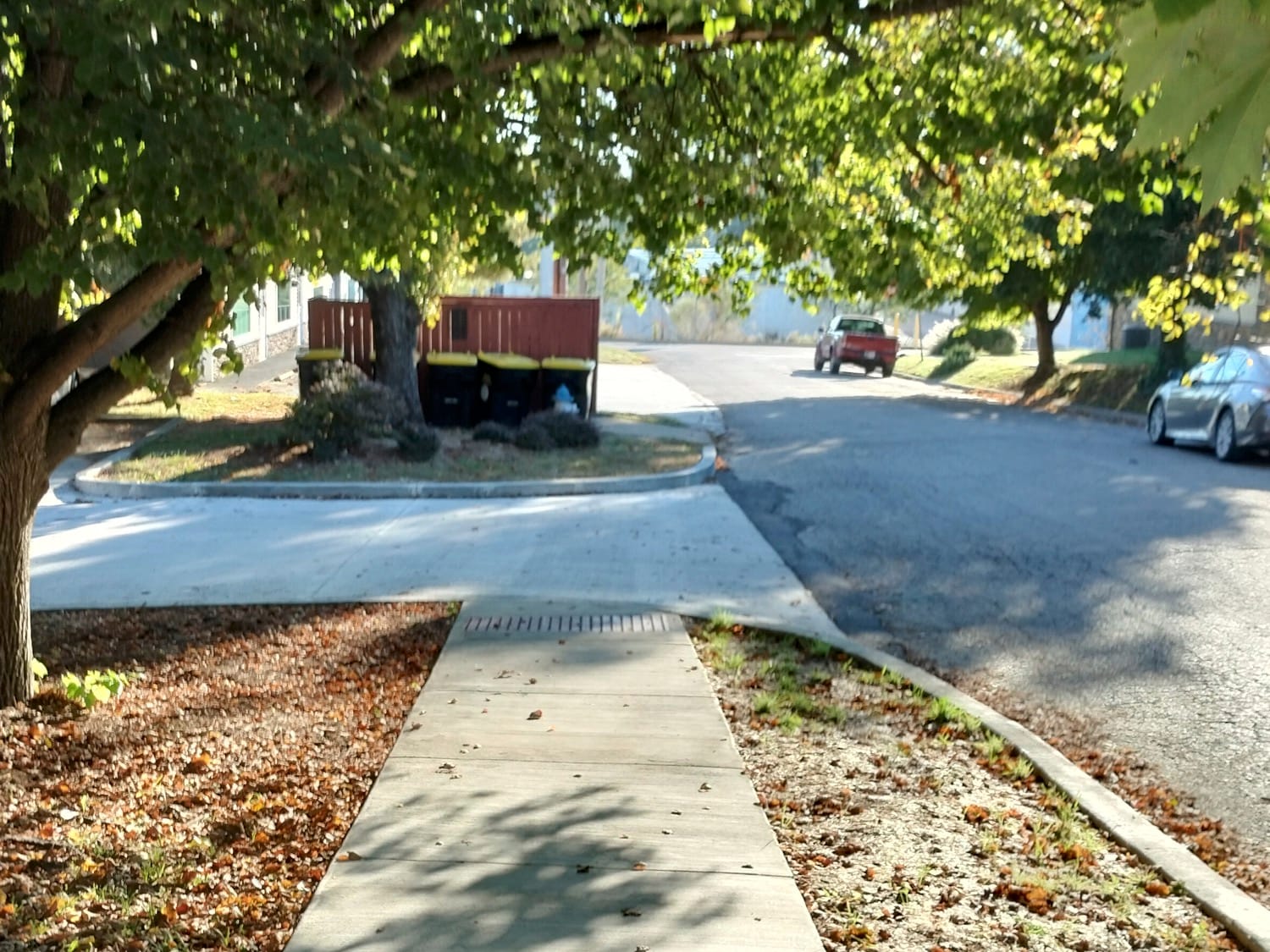
Sections of sidewalk along Howe Street looking east. (Greg Alexander, 2025)
Transcript: Alexander commentary on ped, car conflict
My name is Greg Alexander. I prepared slides, but I was told I can’t use them for … for a bogus accessibility reason. I respect policies, but the council website still says we can use visual aids. Changing the rules without informing the public is disrespectful to my time. You’re creating unneeded animosity.
Anyways. So I will ask you to imagine sidewalks you can’t see. I went to Howe Street in Prospect Hill, and I walked east towards the B-Line over about four blocks. I took six photos of the sidewalk being blocked. Mostly it’s blocked by vegetation. It’s not completely blocked. You’ve got plants growing into the sidewalk, all sorts of patterns. As a single person walking alone, you can simply slip through. The sidewalk is about five feet wide, and the narrowest gap between the plants was about two feet wide. Sometimes you’ll have plants brushing against your body. If you get in the habit of accepting that, you will get poison ivy. It’s a problem.
But still, as a single person, the sidewalk is totally usable. Some of these plants are even beautiful—not when I photographed them. If you’re walking with a bike, now your bike’s snagging on everything, you’re getting twigs, seeds in your chain. It’s not so bad. But it’s not so great, either. You might still walk on the sidewalk. Now, if you’re walking with friends, or if you’re walking with kids, now you’re always switching to single file. It’s friction, trying to keep hold of your kids, while you’re going single file, you know it is, it is so tiring. It breaks up your conversation. It disrupts your focus.
... Half a block before you get to the B-Line, the sidewalk ends entirely to make way for a pile of private trash cans and parking. The sidewalk doesn’t even go the whole distance. Of course, it doesn’t.
What do you do? You walk in the street. This is absolutely normal. Like on homecoming weekend, I saw a bunch of, you know, students and student parents, groups. Anytime there’s a group of more than about five people, they’re just walking in the streets downtown, because they couldn’t fit on the sidewalk.
About a month ago, Shawn Sullivan was walking with his bicycle and two of his friends on Howe Street, the same trip I did, I guess, from the police report. They could have used the same sidewalks that I photographed, but obviously they didn’t. They walked in the street. A driver tried to intimidate them into getting out of the street. Mr. Sullivan refused, and he was shot and killed.
This is a transportation fatality.
The conflict was based on the fact that one group felt they had no choice but to walk in the street, and somebody else felt entitled to demand that they leave the street. Both the victim and the suspect in this case are impoverished.
But even between just them, they felt the class implications of our transportation system. People in cars matter. People without cars don’t.
In the extreme, this common attitude creates murder. You can’t do anything about this in the short term, but we have to keep in mind that our car-first priorities that are enforced in this body still, have consequences that are cultural and psychological beyond merely fiery crashes. Thank you for your time.
Probable cause affidavit
The description in the probable-cause affidavit for the arrest in the case described by Alexander is consistent with the geography that he describes. But the direction of his trip, which was eastward, is in the opposite way that the three companions walked, which was westward.
Shawn Sullivan, [Name 1], and [Name 2] were walking west on Howe Street from Morton Street when possible four door sedan came up really fast behind them. Due to Shawn being in the road at this time, this possibly scared Shawn, at which time he got upset and threw his bicycle at the vehicle. The bicycle did hit the vehicle, after being thrown, somewhere on the back driver’s side. At this point, the passenger exited the vehicle and approached Shawn with gun already in hand. The passenger was very upset with Shawn and began pointing the firearm at him, while Shawn was trying to gather his property in the road. At some point in the confrontation, the passenger pointed the firearm at Shawn and fired one round striking Shawn on the left side of his body.




Comments ()